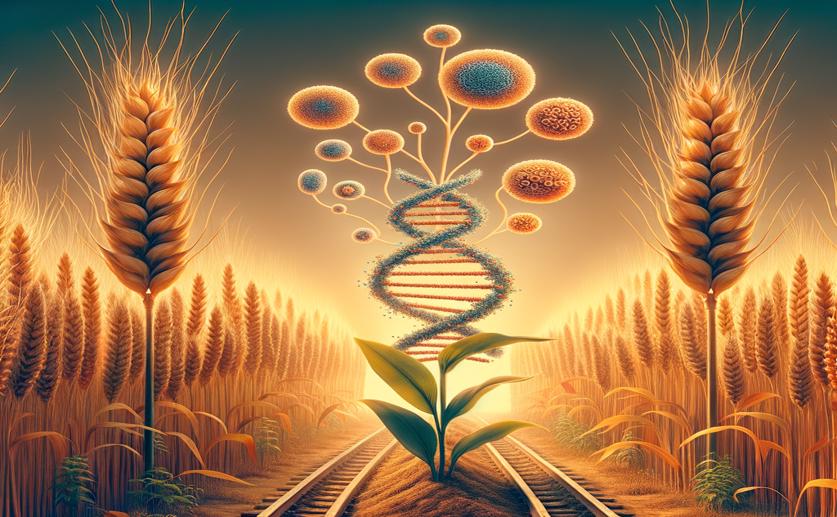
Genes on Chromosome 4B from Different Parents Affect Wheat Growth and Yield
Jenn Hoskins
25th May, 2024

Image Source: Natural Science News, 2024
Key Findings
- Researchers at Minzu University of China identified a key genetic locus on chromosome 4B that affects multiple wheat traits
- The allele from Qingxinmai increases tiller numbers, while the allele from line 041133 enhances spike and grain traits
- This discovery can help wheat breeders improve yield and quality by selecting for specific alleles at this locus
AgricultureGeneticsPlant Science
References
Main Study
1) Alleles on locus chromosome 4B from different parents confer tiller number and the yield-associated traits in wheat
Published 24th May, 2024
https://doi.org/10.1186/s12870-024-05079-4
Related Studies
2) Major Genomic Regions for Wheat Grain Weight as Revealed by QTL Linkage Mapping and Meta-Analysis.
3) Genetic dissection of a major QTL for kernel weight spanning the Rht-B1 locus in bread wheat.
4) Reducing brassinosteroid signalling enhances grain yield in semi-dwarf wheat.



 18th May, 2024 | Jenn Hoskins
18th May, 2024 | Jenn Hoskins